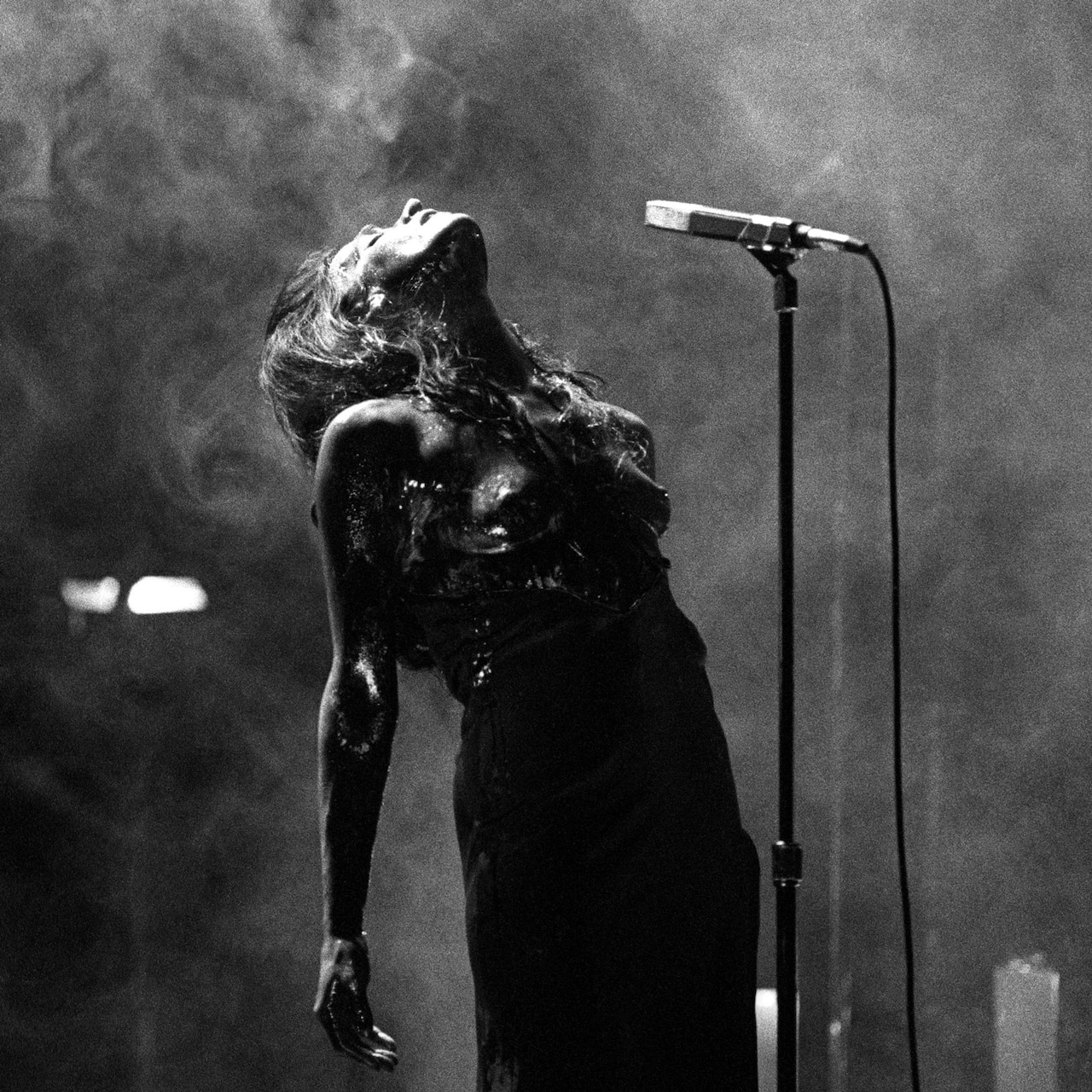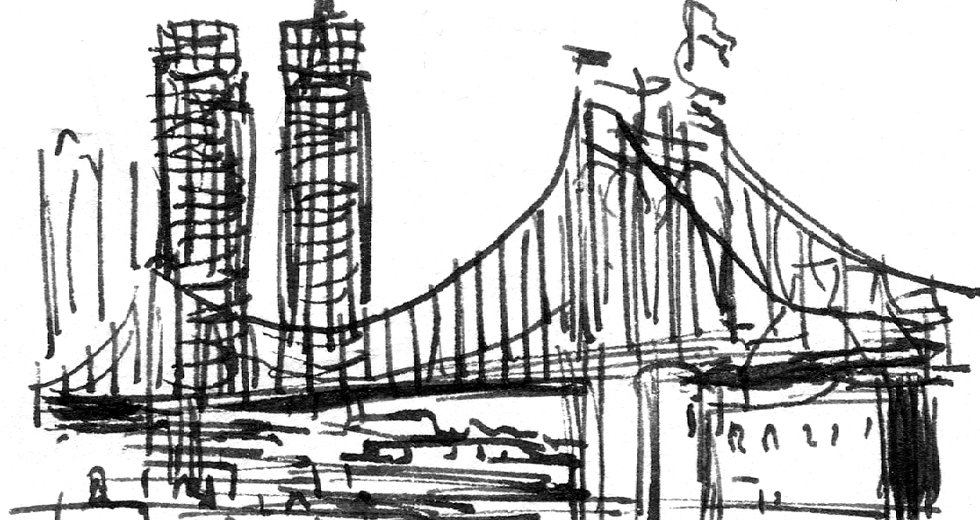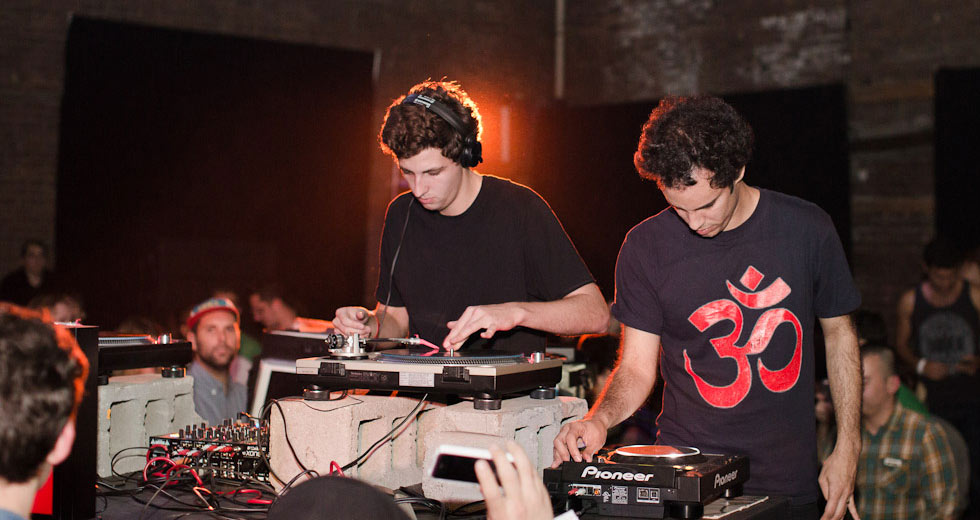
Diamanda Galás: The Politics of the Operatic Voice
The music of Diamanda Galás is a call to revolution, not just because of the activist intentions behind it, but because of her untold capabilities with the human voice. The San Diego-born, NYC-reared singer (also, virtuoso pianist and composer) lingers in those seldom utilized, liminal spaces: halfway between blues singing and the sound of slow asphyxiation; halfway between shrieking and hitting the high note in a Puccini aria. Her versatility incorporates a vast knowledge of musical idioms, from arcane Eastern folk traditions to richly melismatic American soul. For Galás, to traverse beyond the expected and stay there for a decades-long career requires a comprehensive understanding of vocal technique and tradition.
Even among other female avant-garde vocalists who favor “extended techniques” – Meredith Monk, Joan La Barbara and Galás’ most clear predecessor, operatically trained avant-garde vocalist and composer Cathy Berbarian – the particular power of Diamanda’s voice stands alone. It boasts a hard-won, three-and-a-half octave range, several steps larger than that of Maria Callas, Renee Fleming or any number of standard-issue opera stars.
This versatility ensures Galás never sounds like a fixed property. She shifts vocal personas almost moment to moment in her albums or stage work; she’s a gospel chorister, Hellenic folk singer, fire-and-brimstone preacher and human sine-wave synthesizer, all within just a few phrases. She seeks to represent a range of human experience (various shades of suffering, usually) rarely includes her own (for political reasons, mostly).
It's why both everybody and nobody sings like Diamanda Galás. She wanders in and out of characters, or leaps away from them in horror. In Vena Cava, her 1993 exploration of AIDS dementia and mental illness, she speaks in tongues before assuming a confused, Blanche DuBois-like Southern drawl: “I just feel like singing the ‘Battle Hymn of the Republic.’” And she does – unafraid, as in most of her work, to absorb colloquial songs into her own more abstract original compositions. Then: caterwauling cadenzas evoking demonic possession, unmentionable Tourette’s outbursts and finally, drinking songs: “In heaven there is no beer… that’s why we drink it here.”
Galás is not an opera star, even in the most liberal sense of the term. But she is known for performing staged dramatic works – particularly AIDS-themed material like her Masque of the Red Death trilogy and Plague Mass of the late ‘80s. After spending her formative years as a classical and jazz pianist, she came to public prominence through avant-garde music theater. Like Berbarian in the 1950s, Galás began working with forward-thinking contemporary composers abroad, including architect-composer Iannis Xenakis. Her first public performance, in 1979, was in the premiere of Yugoslavian composer Vinko Globokar’s opera, Un Jour Comme un Autre, which tells the story of a Turkish woman killed under torture. Like Galás’ subsequent work, the music is feral: punctuated with wordless ululations, directly political.
Since few outside the operatic realm approach Galás’ level of virtuosity, her performance pieces — whether mounted in grimy downtown clubs or concert halls — share a relationship to the art form. In her formative years, critics compared her uncanny techniques and one-woman dramas to German expressionist music-drama: specifically, Arnold Schoenberg’s 1912 song cycle Pierrot Lunaire or his 1909 stage work Erwartung, a “monodrama” for soprano which Galas once performed.
But despite the debt she owes to his Sprechstimme (a form of eerie speak-song), the aesthetic and philosophical intention of Galás’ works couldn’t be more different from Schoenberg’s. Pieces like Erwartung or, similarly, Alban Berg’s opera Wozzeck are directed toward a more clear narrative and musical catharsis. Galás work, on the other hand, is often cyclical in structure: grounded by refrain-like cries of anguish or ecstasy, moving in fits and spastic jolts, evoking madness. The dramatic situation, insofar as it exists, is porous – described vaguely across many “voices,” not through an individual’s voiced subconscious.
The question of where psychosis ends and sanity begins has been explored in expressionist music, absurdist theater, as well as in the work of other less disciplined and flexible avant-garde vocalists. Galás gleans nothing, however, from the primal-scream-inflected work of Yoko Ono. “This woman can’t sing,” she told Noisey last year. “She had a few vocal sounds, but you have to have 400 sounds at your command if you’re going to go to Mars.”
Like prisoners staging a jail break, the truly daring vocalist needs to know the system’s ins and outs in order to subvert it. When discussing “proper” technique and the importance of musical education, Galás paraphrases Ornette Coleman, one of her early idols and collaborators:
“‘Well, you guys think that I’m playing all this free this or free that, are you crazy? I came out of the blues, I learned the blues, I learned a lot of other music very well as well, and that is why I was able to take it this far...not just because I picked up a horn and suddenly I thought I was a genius.’”
Coleman would eventually get beat up for going too “out” on his solos in Texas dive bars, and Galás – who played Beethoven’s first piano concerto with the San Diego Symphony at the age of 14 – would be arrested and condemned by New York politicians for protesting and shrieking her ways through unholy masses in a “cloak” of blood in cathedrals. In her art, Galás’ fundamental understanding of tradition – especially, her instrument and its context – has allowed her to find what’s truly subversive. She pinpoints sounds and concepts which bend then break all house rules, struggling toward expressing hard, modern reality.
Classical voice teachers often encourage their students to use visual metaphors to distract them from putting undue and potentially harmful pressure on their throat. A vocal pedagogist once explained in The New York Times: “The muscles, once trained, must be forgotten, as if they were responding to natural forces.” Singers may imagine their inhalations and exhalations as streams of water or focus on creating a “buzzing” resonance in the area around their nasal cavity, often referred to as “the mask.” These mental tricks can help accommodate a bright, open and distinctly operatic sound known often as bel canto (“beautiful singing”): full of teeming vibrato, capable of carrying to the last rows of a concert hall without amplification.
Diamanda Galás is neither superstitious, nor afraid of consorting with her larynx. Her metaphor of choice when it comes to her voice is “weapon.” With the help of her trademark live amplification and layering effects, her voice often takes on the sound of a overblown reed instrument in free jazz. Glottal noises and vocal “frys” disrupt her clean, hyperactive vibrato, emulating the metallic, strangled wails of Eric Dolphy or Peter Brötzmann. Controlled, pinched sounds, produced in the throat are central to all of her work, whether she is hissing, stage-whispering like a taunting poltergeist, or belting out a spiritual.
Her vocal methodology functions almost symbolically, as the sound of entire body: its blood, bones and sinews. While bel canto singing promotes growth and wellness, Galás’ work deals with those society has deemed leprous and sick. During the making of the film version of Schrei 27 – a piece inspired by the subhuman conditions of an inhumane insane asylum on Staten Island – she asked filmmaker/collaborator Davide Pepe to show close-ups of her voice mechanism “illustrating what could be a scream. I began sending him x-rays, and a Portuguese video of my vocal cords in phonation.” In the music, she does the seemingly impossible, voicing two or three pitches at the same time, a taboo in traditional classical singing, usually particular to wind instruments or the Tuvan throat-singing of Mongolia and Siberia. The images in the film meld footage of her performance, its inner anatomy and clips of physical torment to form a dizzying college.
Professional opera singers stand onstage majestic and apart: mythical, herbal-tea’d and neti-potted. In her performances, Galás has more skin in the game: The music dramatizes the limits to which she pushes herself. The feeling of risk absorbs her audience in the rigor of her performance; by her own admission, Galás loves to play an intimate room. There is no space to suspend disbelief – no theatrical myth to be supported. She inhabits no characters, presenting the voices and modalities as extensions of herself.
Even singing wild blues at the piano – instead of nude, drowned in flickering lights or covered in blood – Galás’ voice suffers along with her protagonists, who are inevitably in physical, mental and emotional turmoil. Galás’ instrument is not an invisible vessel for an idealized sound, as in the case of the bel canto paragon. She has no need for psychosomatic tricks. She puts herself through controlled hell in real time. Harry Houdini once commented, “No performer should attempt to bite off red-hot iron unless he has a good set of teeth.” Galás has iron dentures; her music is a death-defying stunt, practiced and then ritualized.
Header image © Ebet Roberts

